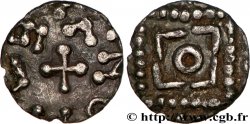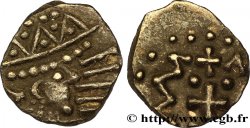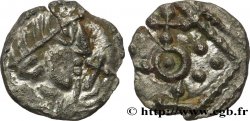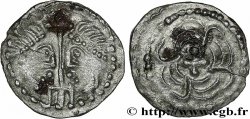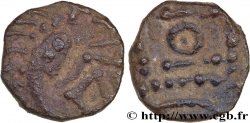bmv_220143 - ENGLAND - ANGLO-SAXONS Sceat à la tête casquée, Série D, type 2c, variété avec la tête à gauche
недоступный.
Товар уже продан в нашем интернет-магазине (2012)
Цена: : 190.00 €
Товар уже продан в нашем интернет-магазине (2012)
Цена: : 190.00 €
Тип Sceat à la tête casquée, Série D, type 2c, variété avec la tête à gauche
Дата: c. 695-740
Монетный двор / Город: Frise, Domburg (Pays-Bas)
Металл: silver
Диаметр: 12,5 mm
Ориентация осей монеты: 6 h.
Вес: 0,67 g.
Редкость: R3
Комментарии о состоянии
Monnaie sur un flan court, mais régulier, avec un droit assez mou mais un très beau revers. Patine sombre et brillante, surtout au revers
Ссылки в каталоге: :
Лицевая сторона
Аверс: легенда: LÉGENDE RUNIQUE DEVANT LE VISAGE.
Аверс: описание: Tête stylisée à gauche, une couronne radiée sur la tête ; les épaules cintrées formées d’un rang de perles entre deux traits parallèles.
Обратная сторона
Реверс: легенда: LÉGENDES GÉOMÉTRIQUES.
Реверс: Описание: Croix grecque bouletée, cantonnée de quatre globules ; légende autour.
Комментарий
Ce type 2c de la série D se divise en deux, selon que le poids est lourd ou léger ; avec 0,67 g, cet exemplaire est plutôt léger.
D. M. Metcalf fait remarquer qu'il existe des copie difficile à reconnaître et que certaine monnaies officielles ont pourtant un style très “pauvre”.
Avec la tête à gauche, cet exemplaire correspond au D400 de T. Abramson qui provient du Yorkshire et est présenté comme une imitation ! La légende runique est particulièrement bien venue sur notre monnaie.
Ce denier probablement frappé à Domburg, est repris comme “Continental runic type”.
D. M. Metcalf fait remarquer qu'il existe des copie difficile à reconnaître et que certaine monnaies officielles ont pourtant un style très “pauvre”.
Avec la tête à gauche, cet exemplaire correspond au D400 de T. Abramson qui provient du Yorkshire et est présenté comme une imitation ! La légende runique est particulièrement bien venue sur notre monnaie.
Ce denier probablement frappé à Domburg, est repris comme “Continental runic type”.








 Cообщить об ошибке
Cообщить об ошибке Распечатать страницу
Распечатать страницу Отправить мой выбор
Отправить мой выбор Задать вопрос
Задать вопрос Consign / sell
Consign / sell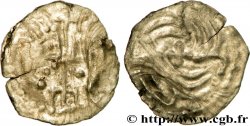
 Информация
Информация